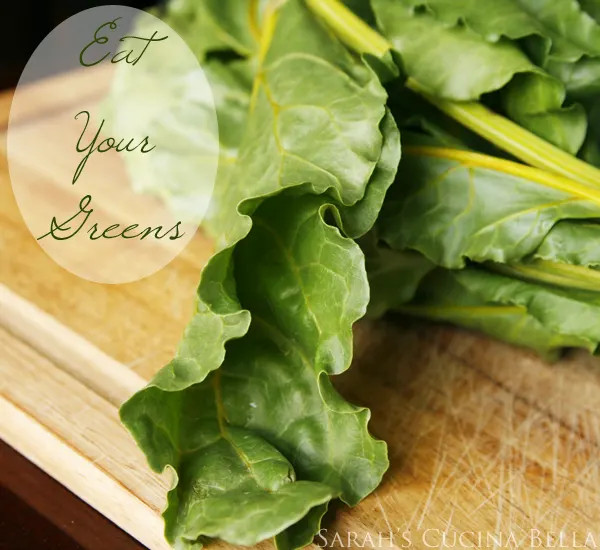
Sarah’s Note: Today’s post comes from a fabulous magazine writer and Etsy seller, Jen Matlack. When she asked if I might want to run this piece here, I couldn’t say no. Enjoy, and see you Monday.
Guest Post by Jennifer Matlack
Contrary to what you might think, the tops of root vegetables aren’t lowly leaves good for only tossing in the trash. You can eat them—and you should: “Greens as a class are rich in antioxidants and phytonutrients,” says Constance Brown-Riggs, RD, a national spokesperson for the Academy of Nutrition and Dietetics.
Some root greens such as turnips and radishes also fall into the cruciferous vegetable category, which may lower cancer risk according to the National Cancer Institute. All these greens boast big flavor, too, and they’re nutrient-packed. Beet leaves, for instance, are rich in blood-pressure-lowering potassium, which if you’re like most Americans you’re probably not getting enough of, notes Brown-Riggs.
And radish leaves? “They have six times as much vitamin C as the vegetable itself,” she says.
Use These Greens
Here’s how to turn five root vegetable tops into good eats according to Chef Dan Kluger of ABC Kitchen:
Beet Greens: Throw these earthy flavored greens (stems and all) into soups. You can also cut the stems into two-inch pieces, bring a simple pickling solution to a boil, then pour over the stems to finish dishes with a sweet crunch.
Carrot Tops: Make an herb stuffing with adult tops—they’re slightly bitter and have minimal carrot flavor—minced shallots, tarragon and parsley and a little butter and lemon zest. Stuff under skin of chicken and roast on a bed of vegetables.
Turnip Greens: Leave the somewhat sharp yet mildly sweet leaves on smaller turnips and braise them together with honey, butter and water for an easy side dish.
- Southern-Style Turnip Greens
- Fennel with Turnip Greens
Radish Greens: Adult leaves tend to be extremely tough and pungent so best to braise them to soften their texture and taste. Dice and throw young radish leaves onto a bed of lettuce to add little spike of spice to the mix.
Celery Leaves: Add celery leaves to hearty soups for a strong flavor or mince and mix with tuna salad.
Two Ideas for Cooking Greens
Braise: The mature root leaves you typically find at the supermarket are more bitter and tougher than younger, just-harvested leaves, says Kluger. After you wash them by soaking in cold water and lifting them out of water and repeating the process, you’ll want to tenderize them. To do this, braise leaves in a little water with olive oil, some aromatics such as ginger, onions and garlic, and Kosher salt and fresh pepper. “Adding other flavoring items such as mushrooms, bacon, or cheese also elevate them from a boring by product to an actual dish,” says Kluger.
Mix ’em In: Add root vegetable tops to pasta filling such as lasagna. “Use beet greens and turnip tops as you would spinach,” says Kluger. Braise the leaves, then toss them into your cheese filling for more flavor.

Kurt Jacobson
Monday 3rd of June 2013
Excellent post on using greens that are usually thrown out. I have used all you mentioned except radish tops. Wouldn't it be nice if everyone used these great greens instead of throwing them out.
Kirsten@FarmFreshFeasts
Wednesday 29th of May 2013
Thanks, Sarah and Jennifer! My CSA farm share started today, and you've taught me something new (I never knew I could use carrot tops for anything other than composting guinea pig food). Thanks!